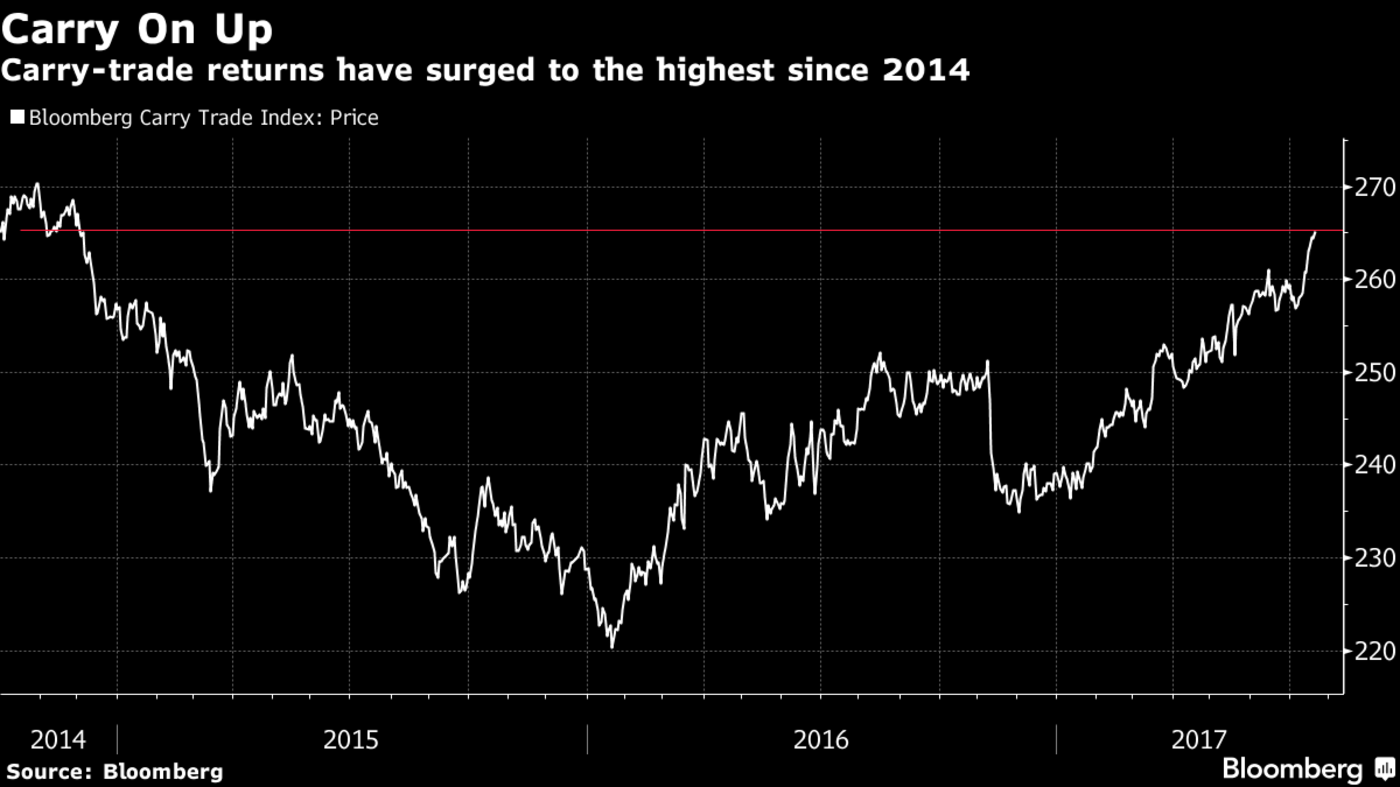By Natasha Doff
(Bloomberg) --The rapid growth of a BlackRock Inc. exchange-traded fund that tracks emerging-market debt is causing jitters among investors.
The iShares JP Morgan EM Local Government Bond ETF, ticker IEML, has doubled in size this year, mopping up more than $3 billion of inflows as investors reach for average yields as high as 4.72 percent in developing economies. The risk is that if the carry trade unwinds, as tends to happen eventually, investors could race for the exit all at once and send the fund tumbling.

“That’s something that keeps me awake at night,” said Remi Olu-Pitan, an investor in Schroder Investment Management’s 96.2 billion pound ($125 billion) multi-asset division in London. “If there is any tantrum or any crisis, that money will flow out. The problem is that the door through which everyone tries to get out is quite small.”
ETFs, which passively track indexes for a fraction of the cost of mutual funds allowing investors to gain easy and cheap exposure to a market, have been criticized for creating bubble-like conditions in less liquid markets. Combine that with an asset class that is prone to mass outflows amid sudden sea changes in sentiment and you could get a potentially toxic situation, according to David Hauner, a strategist at Bank of America Merrill Lynch in London.
Unlike emerging-market mutual funds, ETFs don’t have the option of holding cash, so if they get outflows, they have to sell the underlying bonds in the index they track. And when they sell, they don’t pick the riskiest or most liquid markets first, but a slice of the entire underlying index. Since the index has a cap for the biggest markets, smaller, less liquid markets are over-represented, which can exacerbate losses, according to Hauner.
“If and when there will be a major selloff, which I’m not predicting for the time being, then the fact that the share of this ETF is bigger will be an issue,” Hauner said. “It hasn’t been tested. The share that ETFs hold of the total local-currency bond market is significantly higher now than it was during the taper tantrum.”
ETFs are too small to be a driver for the market, a BlackRock spokesperson said in an emailed response to questions. The fund manager estimates that ETFs account for less than 1 percent of the global bond market, and less than 2 percent of debt in emerging markets.
Still, as a proportion of the $400 billion invested in emerging-market bond funds, the share of ETFs is closer to 12 percent, and it’s increasing every year, according to data compiled by Bloomberg.

Both BofA and Deutsche Bank AG have warned in recent research notes that emerging-market carry trades are starting to look overcrowded. An indicator of sentiment created by BofA earlier this year has for been hovering in the past month close to a level that has historically preceded a correction within four weeks.
While a correction probably isn’t imminent, the more investors who gravitate to the trade, the bigger the plunge will eventually be, according to BofA’s Hauner, who recommends buying hedges of emerging-market currencies wherever they are cheap as protection against a broad selloff.
Such a selloff could be triggered by higher developed-world yields as central banks wind down easy monetary policy, like in 2013’s Taper Tantrum. That would dim the appeal for carry traders of borrowing dollars to buy assets in higher-yielding developing world currencies. Average yields tracked by the Bloomberg Emerging Market Local Sovereign Index have dropped 17 basis points since reaching a two-year high in May.
“If there’s carry in Treasuries then investors might start to rethink their actions in emerging-market debt,” said Olu-Pitan at Schroder. “If we return to the 2013 level we need to be more cautious because of the ETF. The immense flow into these passive strategies is something we need to be wary of.”
--With assistance from Eric J. Weiner.To contact the reporter on this story: Natasha Doff in Moscow at [email protected] To contact the editors responsible for this story: Samuel Potter at [email protected] Cecile Gutscher, Robert Brand

